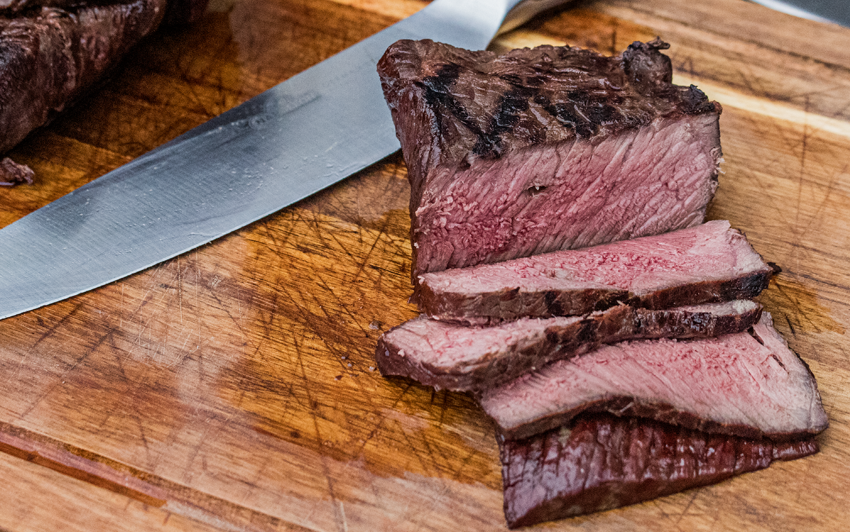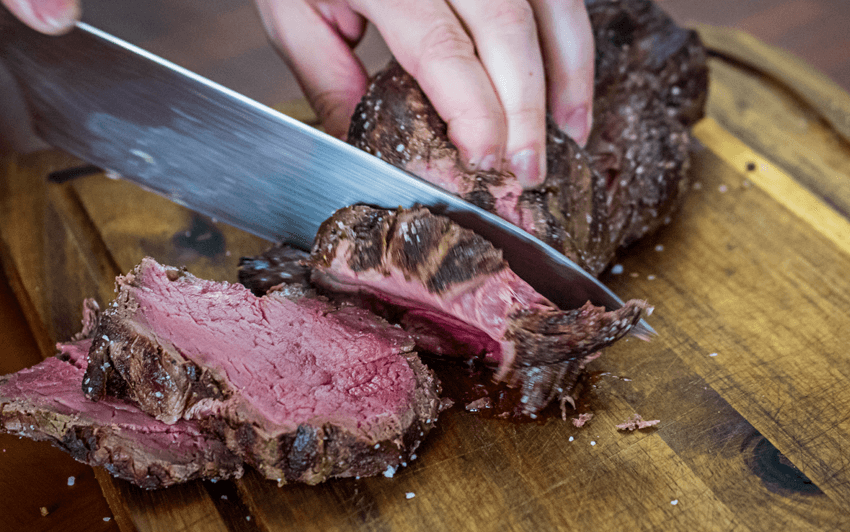
How and Why to Slice Meat Against the Grain
While it is generally accepted that going against the grain is to cause one hardship or difficulty, you actually want to go against the grain when you cut meat to serve it. Find out why slicing your meat against the grain will produce better results in your meals and how to accomplish this easily.
What is the Grain?
Meat doesn’t have things like barley or wheat, nor does it contain wood, so what is the grain? When talking meat, the grain is the striations of muscle fiber that run the length of any given cut. While usually thought of exclusively in the case of beef and steaks, this is applicable to most meats.
Muscle fibers do not tear easily along their length, even if you are trying to do this with the tenderest pieces of meat. That is because those muscles worked hard, even in less used muscles. Grain is easiest to see in cuts like the flank and skirt steak, even brisket, versus cuts like the tenderloin and ribeye.
Muscle fibers are grouped in long bundles and housed in a tough outer sheath. Generally, they look pretty organized. When you apply heat through cooking, that sheath contracts and becomes tough, pulling those fibers in tight. When cooking, the idea is to prevent these sheaths and fibers from contracting, while, when you serve and eat your meal, you want these to be as short as possible.
Why You Should Cut Against the Grain
When you want to experience the best of an expertly prepared meal, it is imperative that you cut across or against the grain. The idea is to shorten the muscle fibers of your meat as much as possible to provide a more tender bite. Cutting against the grain accomplishes that, making it easier to chew your food and providing a more tender mouthfeel. This means your steak will be a lot less chewy, even if you cooked it past medium. In fact, meat sliced with the grain instead of against it can be up to 4-times more chewy and tough.
How to Cut Against the Grain
As mentioned above, the goal of cutting against the grain is to shorten muscle fibers to provide a better mouthfeel and easier chewing. Cutting parallel to the grain pattern would have you cutting along those fibers keeping them long and thus the meat tough. Instead, you want to cut perpendicular – at 90 degrees – to the grain pattern, across it instead. For even more tenderness while biting and chewing, the thinner the slice, the better as well.
Not every grain runs in the same direction in every cut of meat. Every muscle group is different and you have to pay attention. If you are unsure when making a purchase, your butcher will be able to help you decide the direction of the grain. Or when you start your slicing a cooked meal and notice that the striations in the meat are longer, running the length of the cut instead of vertically through the cut in short lengths, just turn the meat and start slicing again.
Do you go against the grain when slicing your meat? Share your messes, success stories, and especially your favorite grilling recipes with us on our social pages like TikTok and Facebook. Don’t forget to use the hashtags #NapoleonEats and #NapoleonGrilling!
Happy Grilling!


